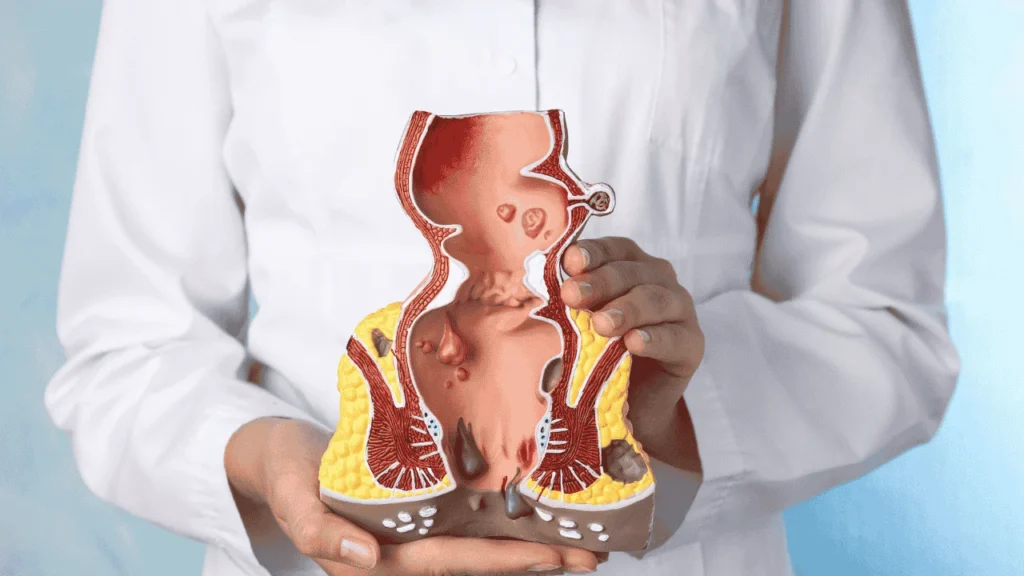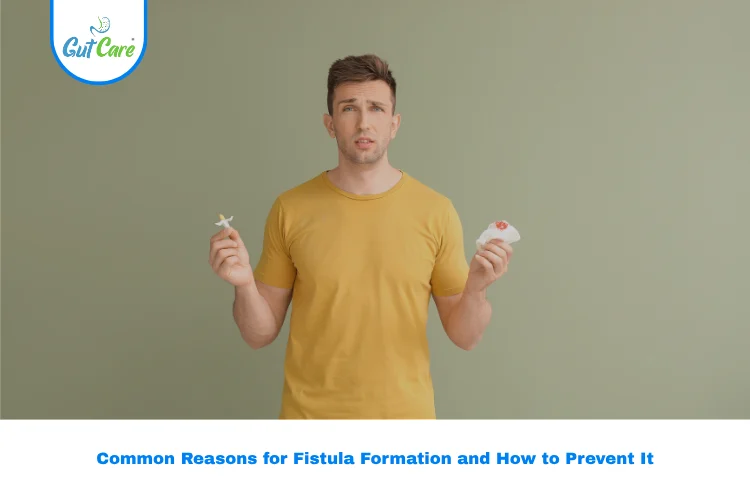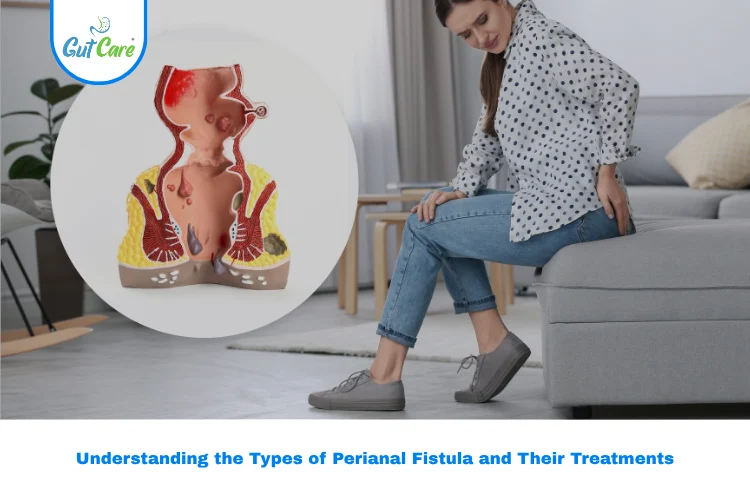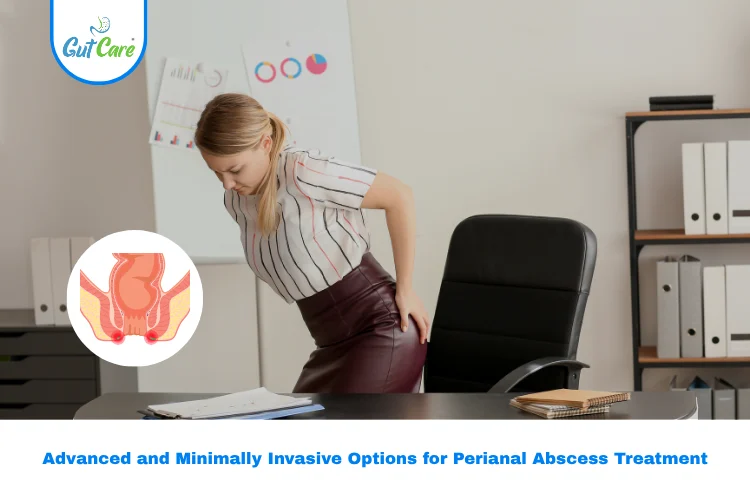Introduction
“Imagine a laser treatment for anal fistulas that’s fast, nearly painless, and allows you to return to your normal life within just a few days—no lengthy recovery, no major surgery required. Discover how this innovative approach is transforming the way we treat this condition, offering a modern, effective solution that might just be the answer you’ve been looking for.”
Table of Contents
An anal fistula is a small tunnel that forms between the end of the bowel and the skin near the anus. It usually happens when an infection in the anal area causes an abscess, which then creates this abnormal connection. If not treated, it can cause pain, discomfort, and other health issues.
Traditionally, doctors have treated anal fistulas through surgery. While these methods can be effective, they often involve cutting through tissues, which can lead to pain, a long recovery time, and even a chance of the fistula coming back. However, laser therapy for anal fistulas offers a less invasive alternative with reduced risks and quicker recovery.
But now, there’s a more advanced and less invasive option: laser treatment. This new method uses a precise laser to treat the fistula without the need for major surgery. It’s a simpler, faster, and less painful way to get rid of the fistula, helping patients get back to their normal lives more quickly.
Understanding Anal Fistulas
An anal fistula is like a small, abnormal tunnel that connects an infected gland inside the anus to an opening on the skin around the anus. This tunnel forms when an infection in one of the tiny glands in the anus doesn’t heal properly. The infection turns into an abscess (a pocket of pus), and when the abscess doesn’t heal fully, it creates the fistula.
There are several reasons why someone might develop an anal fistula. These include:
- Infections: Often due to bacteria or inflammation in the anal glands.
- Crohn’s Disease: A type of inflammatory bowel disease that can cause chronic inflammation.
- Trauma or Injury: Damage to the anal area can sometimes lead to fistulas.
- Tuberculosis or Cancer: In rare cases, these conditions can cause fistulas.
Symptoms and Complications if Left Untreated
Anal Fistulas can cause a variety of uncomfortable symptoms, including:
- Pain and Swelling: The area around the anus may become painful, especially when sitting, moving, or going to the bathroom.
- Discharge: Pus or blood may leak from the opening of the fistula, which can stain clothes and cause irritation.
- Skin Irritation: The constant leakage can irritate the skin around the anus, causing itching and discomfort.
If a fistula is not treated in time, it can lead to serious complications:
- Chronic Pain: The pain can become constant and more severe.
- Infection Spread: The infection can spread to other areas, leading to more abscesses.
- Fistula Tract Enlargement: The fistula can become larger and more complex, making it harder to treat.
- Risk to Surrounding Tissue: The fistula can damage surrounding tissues, including the muscles that control bowel movements.
Importance of Timely Treatment
Treating an anal fistula as soon as possible is crucial to prevent these complications. Early treatment can relieve pain, stop the spread of infection, and reduce the chances of the fistula coming back. With modern options like laser treatment, getting rid of a fistula is less invasive and allows for a quicker recovery, making it easier for patients to return to their daily activities with minimal disruption.
Traditional Treatment Methods
When it comes to treating anal fistulas, there are a few traditional methods that doctors commonly use:
- Surgery: One of the most common methods is surgical removal of the fistula. This procedure involves opening the fistula tract to enable healing from the inside out.The surgeon carefully opens the fistula, cleans out any infection, and then allows it to heal naturally. This method is effective but can be painful and may require a long recovery time.
- Fistulotomy: This is a specific type of surgery where the entire fistula tract is cut open and laid flat. The wound is then left open to heal. Fistulotomy is usually effective in treating simple fistulas, but it’s more challenging for complex cases. This method is often chosen when the fistula is located away from important muscles that control bowel movements.
- Seton Placement: In some cases, particularly when the fistula passes through important muscles, doctors might use a seton. A seton is a thin piece of surgical thread that is placed in the fistula tract. It helps to keep the fistula open, allowing it to drain and heal slowly over time. This method is often used when a fistula is complex or in a delicate area.
Limitations and Potential Risks
While these traditional treatments can be effective, they come with some limitations and risks:
- Pain: Since these treatments often involve cutting through tissue, they can cause significant pain during recovery. Pain management is typically required, and the discomfort can last for several weeks.
- Recovery Time: Healing after traditional fistula surgery can take a long time, often several weeks to a few months. During this period, patients might need to take time off work, avoid certain activities, and follow a strict care regimen to ensure proper healing.
- Recurrence: One of the major concerns with traditional methods is the risk of the fistula coming back. Even after a successful surgery, there is always a chance that the fistula could recur, leading to more procedures and prolonged discomfort.
- Risk to Surrounding Muscles: Particularly with fistulotomy, there’s a risk of damaging the muscles that control bowel movements. If these muscles are harmed, it could lead to issues like incontinence, which can significantly affect a patient’s quality of life.
These limitations and risks make it important for patients and doctors to consider all treatment options, including newer, less invasive methods like laser treatment, which can offer a faster, less painful recovery with a lower risk of complications.
What is Laser Treatment for Anal Fistulas?
Laser treatment for anal fistulas is a modern, minimally invasive procedure that uses advanced laser technology to treat the fistula. The procedure involves using a thin, flexible laser fiber that is inserted into the fistula tract. The laser emits precise bursts of energy that work to close the fistula from the inside out.

The key to this technology is the laser’s ability to target the tissue with high accuracy. The laser energy helps to seal the fistula tract by promoting the body’s natural healing process, causing the tissue to shrink and close the abnormal passage without needing to cut through any tissue externally.
How the Laser Targets and Closes the Fistula Tract
During the procedure, the surgeon inserts the laser fiber into the fistula tract. Once in place, the laser is activated, and it delivers controlled energy along the length of the tract. This energy causes the walls of the fistula to collapse and seal together, effectively closing the tunnel.
As the laser moves through the tract, it carefully ablates (removes) the unhealthy tissue while preserving the surrounding healthy tissue. The body then naturally absorbs the closed fistula tract as part of the healing process. The precise application of laser treatment for anal fistulas ensures that only the affected area is treated, minimizing damage to nearby tissues and reducing the risk of complications.
Benefits of Using Laser Over Traditional Methods
Laser treatment offers several significant advantages over traditional methods:
- Precision: The laser allows for highly precise treatment, targeting only the fistula tract without affecting the surrounding tissues. This precision reduces the risk of damaging important muscles and nerves, which is a common concern with traditional surgery.
- Minimal Invasiveness: Unlike traditional surgeries that require cutting through tissues, laser treatment is minimally invasive. There are no large incisions, which means less pain, reduced risk of infection, and minimal scarring.
- Faster Recovery: Patients who undergo laser treatment typically experience a much quicker recovery compared to traditional methods. Most patients can return to their normal activities much sooner, often within a few days.
- Lower Risk of Recurrence: Because the laser effectively seals the fistula tract, there is a lower chance of the fistula recurring. This is a significant benefit for patients who want a long-term solution with minimal disruption to their lives.
- Outpatient Procedure: Laser treatment is usually performed as an outpatient procedure, meaning patients can go home the same day. This convenience adds to the overall appeal of the treatment.
The Laser Treatment Procedure
Laser treatment for anal fistula is a straightforward process that typically involves the following steps:
- Consultation and Assessment: Before the procedure, the doctor will thoroughly assess the fistula using imaging techniques like an MRI or ultrasound to determine its location, size, and complexity. This helps in planning the laser treatment precisely.
- Preparation: The patient is prepared for surgery on the day of the procedure. This may include fasting for a few hours before the procedure and cleansing the bowel, depending on the doctor’s instructions.
- Anesthesia: The procedure is usually performed under local or general anesthesia, depending on the complexity of the fistula and the patient’s comfort level. Local anesthesia numbs the area around the fistula, while general anesthesia puts the patient to sleep during the procedure.
- Laser Application: Once the anesthesia has taken effect, the surgeon inserts a thin, flexible laser fiber into the fistula tract. The laser is carefully guided through the entire length of the fistula.
- Sealing the Fistula: The laser is activated, and it delivers precise energy to the fistula walls, causing them to collapse and seal together. This process effectively closes the fistula without cutting through the surrounding tissues.
- Completion: After the laser has treated the entire tract, the fiber is gently removed. The procedure usually takes around 30 to 60 minutes, depending on the fistula’s size and complexity.
Preparation Before the Procedure
Before the laser treatment, the patient will receive specific instructions to prepare for the procedure:
- Medical History Review: The doctor will review the patient’s medical history and any medications they are taking to ensure there are no contraindications.
- Fasting: The patient may need to fast for several hours before the procedure, especially if general anesthesia is used.
- Bowel Preparation: In some cases, the patient may need to undergo bowel preparation, such as using a laxative, to ensure the area is clean.
- Medication Adjustments: Certain medications, like blood thinners, may need to be adjusted or paused before the procedure.
What Happens During the Treatment
- Anesthesia: The procedure starts with administering anesthesia to keep the patient comfortable and pain-free.
- Laser Application: The surgeon inserts the laser fiber into the fistula tract and activates the laser. The laser energy carefully seals the fistula without causing damage to surrounding tissues.
- Duration: The entire process typically takes between 30 to 60 minutes, depending on the complexity of the fistula.
Post-Treatment Care and Recovery Process
After the procedure, the patient will be monitored for a short time before being allowed to go home. Post-treatment care includes:
- Pain Management: Most patients experience minimal pain after the procedure, but over-the-counter pain relievers may be prescribed if needed.
- Wound Care: Since the procedure is minimally invasive, there are usually no significant wounds to care for. However, the patient should keep the area clean and dry to prevent infection.
- Diet: The patient may be advised to follow a soft diet for a few days to avoid straining during bowel movements.
- Activity Restrictions: Most patients can return to their normal activities within a few days, but heavy lifting and strenuous activities should be avoided for a short period.
- Follow-Up: A follow-up appointment is usually scheduled a few weeks after the procedure to ensure proper healing and to check for any signs of recurrence.
In most cases, patients can expect a smooth and quick recovery with minimal discomfort, allowing them to return to their daily routines with ease.
Possible Risks and Complications
- Incomplete Closure of the Fistula: In some cases, the laser may not completely seal the fistula tract, which could lead to an incomplete closure. This might result in the fistula persisting or recurring, requiring additional treatment.
- Infection: Although the risk of infection is lower with laser treatment compared to traditional surgery, there is still a small chance of infection at the site where the laser fiber was inserted. Proper wound care is crucial to reducing this risk.
- Bleeding: Minor bleeding can occur during or after the procedure, though it is usually minimal and stops on its own. In rare cases, more significant bleeding may occur and require medical attention.
- Damage to Surrounding Tissues: While the laser is precise, there is still a small risk of damage to surrounding tissues, especially if the fistula is located near sensitive areas. This could lead to complications such as pain or, in rare cases, incontinence if the sphincter muscles are affected.
- Reaction to Anesthesia: As with any procedure involving anesthesia, there is a small risk of an adverse reaction. This is more likely if general anesthesia is used, though it’s rare and usually manageable with appropriate medical care.
How to Mitigate These Risks
- Choosing an Experienced Surgeon: The skill and experience of the surgeon performing the laser treatment play a significant role in minimizing risks. Ensure that the procedure is carried out by a qualified and experienced specialist who has successfully performed many similar treatments.
- Thorough Pre-Procedure Assessment: A detailed assessment before the procedure can help identify any potential complications. This includes reviewing the patient’s medical history, conducting necessary imaging studies, and carefully planning the treatment approach.
- Strict Adherence to Post-Procedure Care: Following the doctor’s instructions for post-procedure care is crucial in reducing the risk of complications. This includes keeping the area clean, avoiding strenuous activities, and attending follow-up appointments to monitor healing.
- Promptly Addressing Symptoms: If any unusual symptoms arise after the procedure, such as excessive pain, bleeding, or signs of infection (e.g., fever, redness, or swelling), it’s important to contact the healthcare provider immediately. Early intervention can prevent minor issues from becoming serious complications.
- Proper Use of Antibiotics: If prescribed, taking antibiotics as directed can help prevent infection. Patients should complete the full course of antibiotics, even if they feel well, to ensure that the infection does not develop.
Frequently Asked Questions
What is laser treatment for anal fistulas, and how does it work?
Laser treatment for anal fistulas is a minimally invasive procedure that uses a precise laser to close the fistula tract. The laser fiber is inserted into the fistula, where it emits controlled energy that causes the fistula walls to collapse and seal, promoting natural healing without the need for major surgery.
Is laser treatment for anal fistulas painful?
Laser treatment for anal fistulas is generally less painful than traditional surgery. The procedure is minimally invasive, and most patients experience only mild discomfort during recovery. Pain is typically managed with over-the-counter pain relievers, and the overall recovery time is shorter.
How long does it take to recover from laser treatment for anal fistulas?
Recovery time after laser treatment for anal fistulas is usually much quicker than with traditional surgery. Most patients can resume their normal activities within a few days with minimal discomfort. Complete recovery usually takes a few weeks.
What are the risks and complications associated with laser treatment for anal fistulas?
While laser treatment for anal fistulas is generally safe, potential risks include incomplete closure of the fistula, infection, minor bleeding, and damage to surrounding tissues. However, these risks are lower compared to traditional surgery, and most complications can be managed effectively.
Is laser treatment for anal fistulas effective in preventing recurrence?
Yes, laser treatment for anal fistulas is effective in reducing the risk of recurrence. The precise nature of the laser ensures that the fistula is properly sealed, which lowers the chances of it coming back. However, as with any treatment, there is still a small possibility of recurrence.
Conclusion
Laser treatment for anal fistulas offers a modern, minimally invasive solution with numerous benefits, including reduced pain, faster recovery, and a lower risk of complications. By choosing laser treatment, patients can address their condition effectively while preserving their quality of life.
If you or a loved one are experiencing symptoms of an anal fistula, it’s crucial to seek expert care. At Gutcare Hospitals in Bangalore, our experienced specialists are here to provide the most advanced treatments available. Don’t let an anal fistula disrupt your life—reach out to us today to schedule a consultation and take the first step towards a pain-free recovery.




